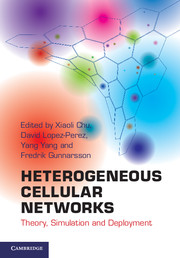Book contents
- Frontmatter
- Contents
- Acknowledgments
- Forewords
- Preface
- List of contributors
- Acronyms
- 1 Introduction
- 2 Radio propagation modeling
- 3 System-level simulation and evaluation models
- 4 Access mechanisms
- 5 Interference modeling and spectrum allocation in two-tier networks
- 6 Self-organization
- 7 Dynamic interference management
- 8 Uncoordinated femtocell deployments
- 9 Mobility and handover management
- 10 Cooperative relaying
- 11 Network MIMO techniques
- 12 Network coding
- 13 Cognitive radio
- 14 Energy-efficient architectures and techniques
- Intex
4 - Access mechanisms
Published online by Cambridge University Press: 05 June 2013
- Frontmatter
- Contents
- Acknowledgments
- Forewords
- Preface
- List of contributors
- Acronyms
- 1 Introduction
- 2 Radio propagation modeling
- 3 System-level simulation and evaluation models
- 4 Access mechanisms
- 5 Interference modeling and spectrum allocation in two-tier networks
- 6 Self-organization
- 7 Dynamic interference management
- 8 Uncoordinated femtocell deployments
- 9 Mobility and handover management
- 10 Cooperative relaying
- 11 Network MIMO techniques
- 12 Network coding
- 13 Cognitive radio
- 14 Energy-efficient architectures and techniques
- Intex
Summary
Introduction
The objectives behind this chapter are twofold. One is to provide an in-depth description of access control in heterogeneous cellular networks (HCNs) from the perspectives of the core network (CN), the radio access network (RAN) and the user equipment (UE). The second objective is to provide benefits and tradeoff analysis of different access control schemes through numerical simulations with respect to various performance metrics such as the percentage of offloaded UEs as well as cell-average and cell-edge data throughput.
A rudimentary understanding of the Universal Mobile Telecommunication System (UMTS) and Long Term Evolution/System Architecture Evolution (LTE/SAE) cellular architectures is essential to get some intuition behind how access control is implemented in contemporary HCNs. Section 4.2 introduces the motivation for access control and describes available access methods. Sections 4.3 and 4.4, respectively, provide a basic overview of the UMTS and Long Term Evolution (LTE) cellular architectures. We describe two main components of the system architecture, namely the CN and the RAN. At a high level, the CN is responsible for overall control of the UE including packet processing, quality of service (QoS) enforcement and connection with the operator network.The RAN is responsible for the radio air interface functions to the UE. In UMTS, the RAN functions are split between a radio network controller (RNC) and a NodeB, in LTE, the RAN functions reside at a single logical node called the evolved NodeB (eNB).
- Type
- Chapter
- Information
- Heterogeneous Cellular NetworksTheory, Simulation and Deployment, pp. 87 - 110Publisher: Cambridge University PressPrint publication year: 2013



